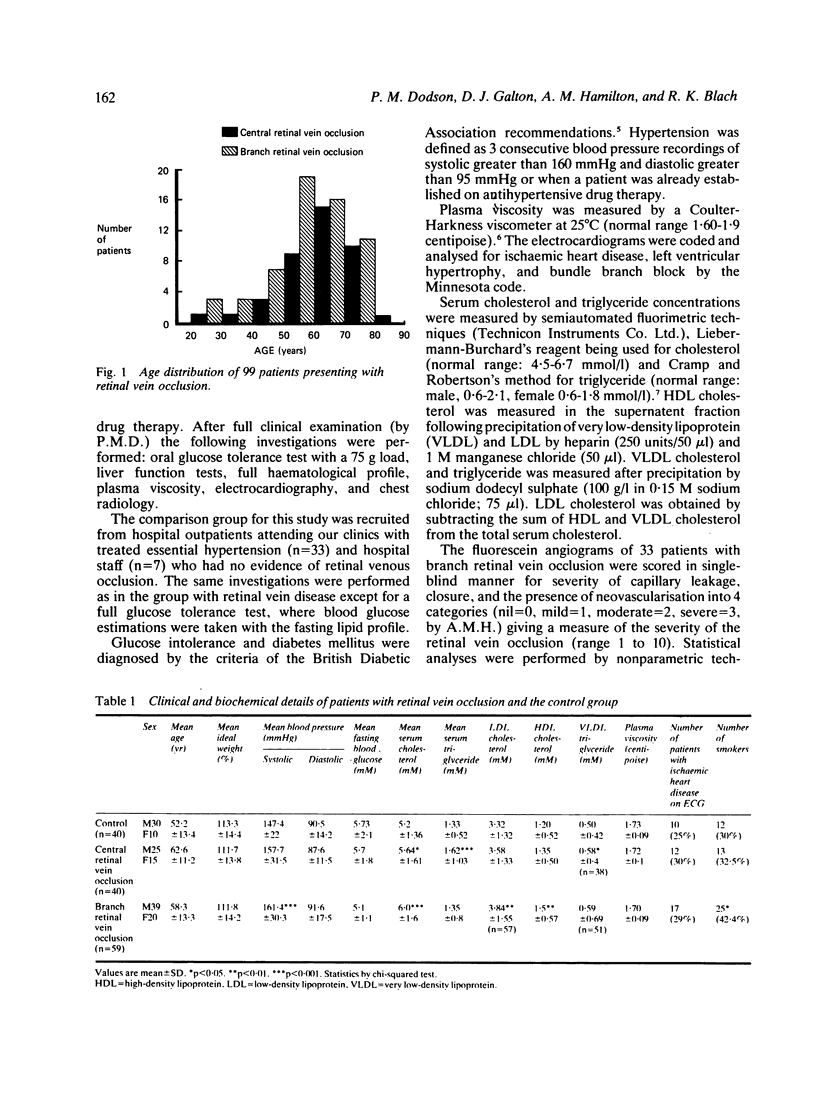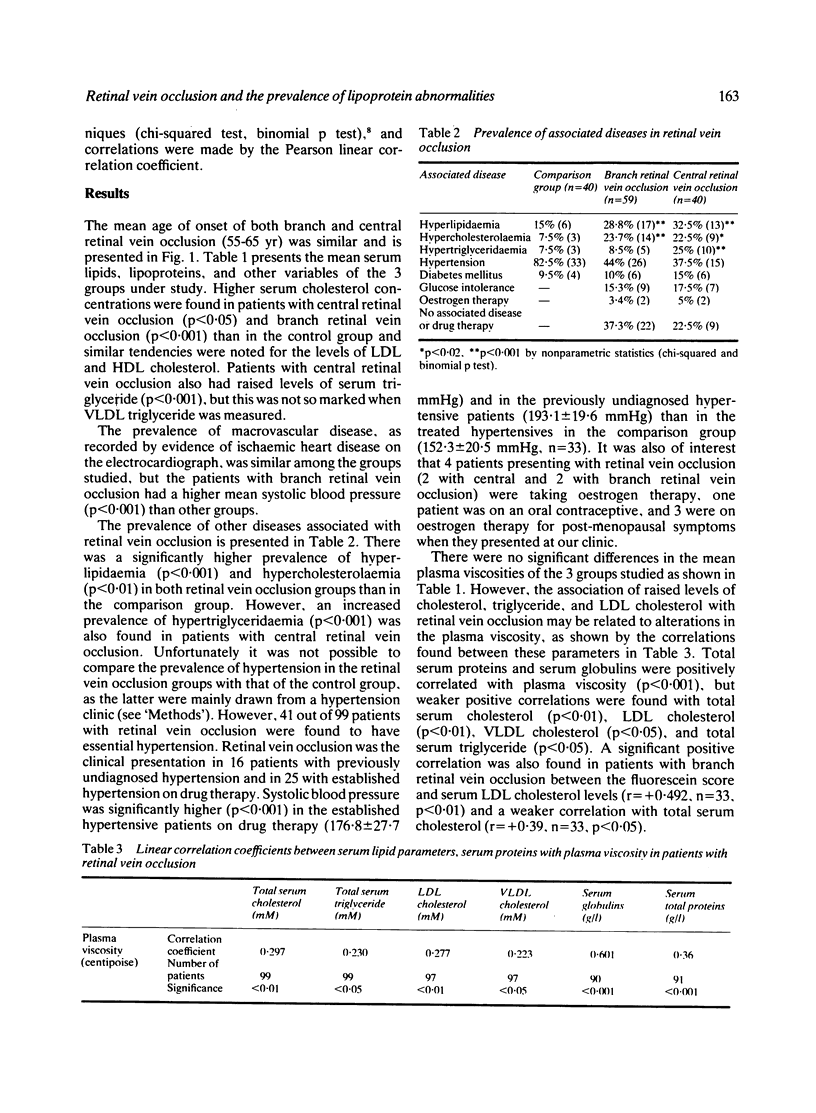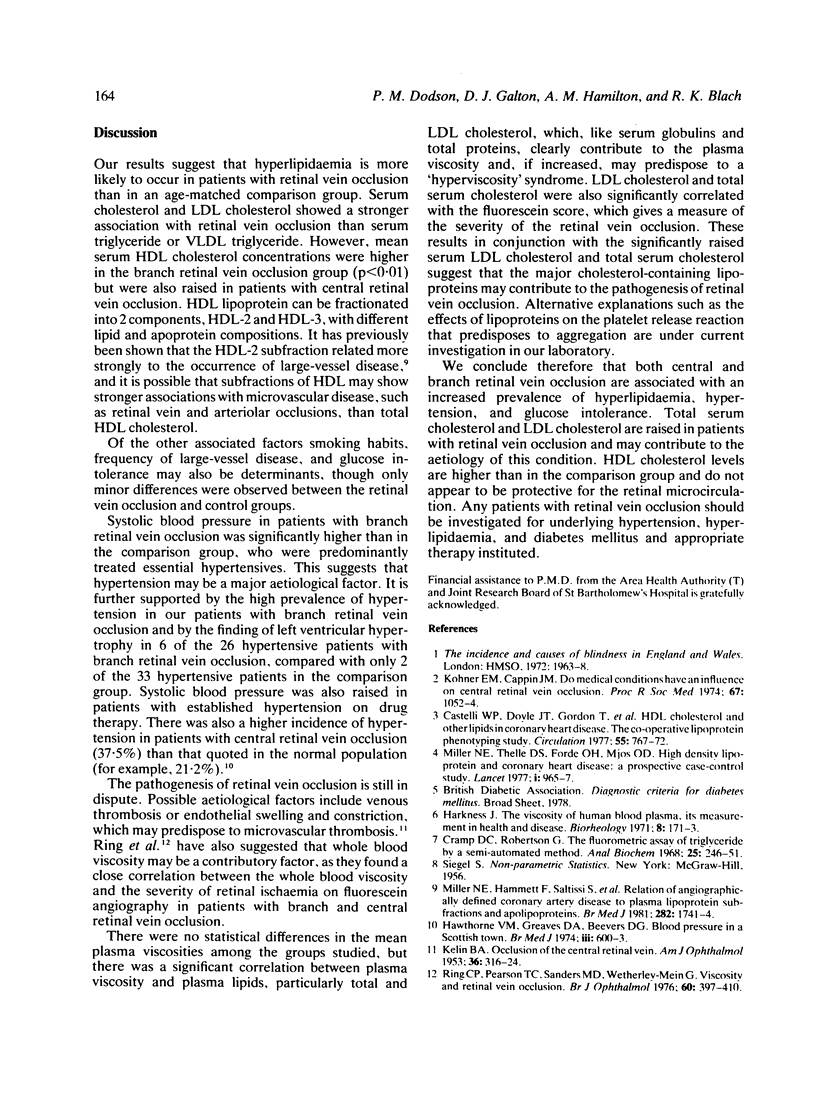Abstract
Ninety-nine patients with retinal vein occlusion (40 with central, 59 with branch vein occlusion) were investigated for the prevalence of associated diseases for comparison with an age-matched control group. There was a significantly increased prevalence of hyperlipidaemia (p less than 0.001) and hypercholesterolaemia (p less than 0.001) in the group with branch retinal vein occlusion and of hyperlipidaemia (p less than 0.001) and hypercholesterolaemia (p less than 0.02) in the group with central retinal vein occlusion compared with controls. An increased prevalence of hypertriglyceridaemia (p less than 0.001) was also found in patients with central vein occlusion. Other associations were noted (hypertension and oestrogen therapy). Increased serum cholesterol concentrations were found in patients with central vein occlusion (p less than 0.05) and branch vein occlusion (p less than 0.001) compared with controls, and similar tendencies were noted for levels of LDL and HDL cholesterol. Patients with central vein occlusion also had raised levels of serum triglyceride (p less than 0.001) and VLDL-triglyceride (p less than 0.05). The occurrence of both central and branch vein occlusions may be associated with an increased prevalence of hyperlipidaemia and hypertension. Increase of serum lipids may contribute to the aetiology of vein occlusion by altering plasma viscosity or affecting platelet function.
Full text
PDF



Selected References
These references are in PubMed. This may not be the complete list of references from this article.
- Cramp D. G., Robertson G. The fluorometric assay of triglyceride by a semiautomated method. Anal Biochem. 1968 Oct 24;25(1):246–251. doi: 10.1016/0003-2697(68)90097-3. [DOI] [PubMed] [Google Scholar]
- Harkness J. The viscosity of human blood plasma; its measurement in health and disease. Biorheology. 1971 Dec;8(3):171–193. doi: 10.3233/bir-1971-83-408. [DOI] [PubMed] [Google Scholar]
- KLIEN B. A. Occlusion of the central retinal vein; clinical importance of certain histopathologic observations. Am J Ophthalmol. 1953 Mar;36(3):316–324. doi: 10.1016/0002-9394(53)91373-7. [DOI] [PubMed] [Google Scholar]
- Kohner E. M., Cappin J. M. Do medical conditions have an influence on central retinal vein occlusions? Proc R Soc Med. 1974 Oct;67(10):1052–1054. doi: 10.1177/003591577406701037. [DOI] [PMC free article] [PubMed] [Google Scholar]
- Miller N. E., Hammett F., Saltissi S., Rao S., van Zeller H., Coltart J., Lewis B. Relation of angiographically defined coronary artery disease to plasma lipoprotein subfractions and apolipoproteins. Br Med J (Clin Res Ed) 1981 May 30;282(6278):1741–1744. doi: 10.1136/bmj.282.6278.1741. [DOI] [PMC free article] [PubMed] [Google Scholar]
- Miller N. E., Thelle D. S., Forde O. H., Mjos O. D. The Tromsø heart-study. High-density lipoprotein and coronary heart-disease: a prospective case-control study. Lancet. 1977 May 7;1(8019):965–968. doi: 10.1016/s0140-6736(77)92274-7. [DOI] [PubMed] [Google Scholar]
- Ring C. P., Pearson T. C., Sanders M. D., Wetherley-Mein G. Viscosity and retinal vein thrombosis. Br J Ophthalmol. 1976 Jun;60(6):397–410. doi: 10.1136/bjo.60.6.397. [DOI] [PMC free article] [PubMed] [Google Scholar]


